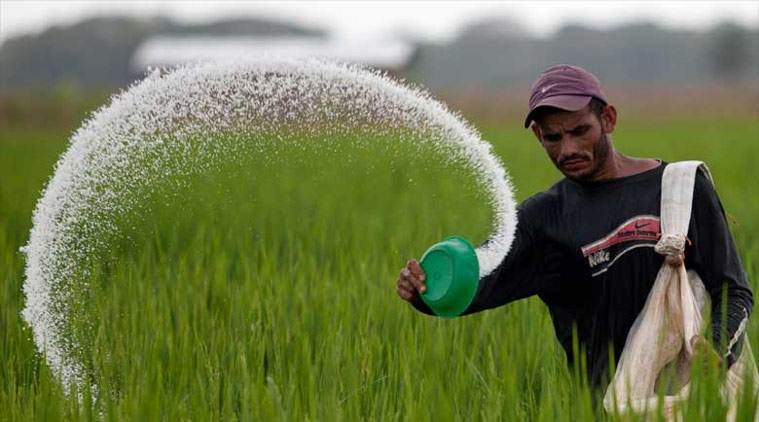 In 2019-20, India imported a record 11 million tonnes (mt) of urea valued at $ 2.89 billion — in which China’s share was over 2.9 mt, worth $ 854.56 million. Although lower than the high of 6.4 mt ($ 1.98 billion) in 2014-15, it was above the 0.8 mt ($ 235.74 million) for 2017-18. (File)
In 2019-20, India imported a record 11 million tonnes (mt) of urea valued at $ 2.89 billion — in which China’s share was over 2.9 mt, worth $ 854.56 million. Although lower than the high of 6.4 mt ($ 1.98 billion) in 2014-15, it was above the 0.8 mt ($ 235.74 million) for 2017-18. (File)
Urea could be the first big-ticket item in which the Narendra Modi government reaches atmanirbharta or self-reliance, reducing the dependence on Chinese imports.
Four new urea plants will be commissioned before 2021, and a fifth is expected in 2023. The lumpsum turnkey execution contract for the fifth plant has, incidentally, been awarded to the Chinese state-owned firm Wuhuan Engineering.
In 2019-20, India imported a record 11 million tonnes (mt) of urea valued at $ 2.89 billion — in which China’s share was over 2.9 mt, worth $ 854.56 million. Although lower than the high of 6.4 mt ($ 1.98 billion) in 2014-15, it was above the 0.8 mt ($ 235.74 million) for 2017-18.
“The five new units are of 1.27 mt per annum production capacity each. Once they, and three others that are currently shut or are in the process of getting gas, are functional, we will become atmanirbhar in urea by 2023-24,” a top government official told The Indian Express.
The first of these plants will be ready in October, before the next rabi crop season. Being implemented by Ramagundam Fertilisers & Chemicals — a joint venture of National Fertilisers, Engineers India, and Fertilisers Corporation of India Ltd (FCIL) — it is the revival project of a closed state-owned unit in Ramagundam, Telangana.
The other three projects that are expected to be commissioned before next year are at Gorakhpur (UP), Sindri (Jharkhand), and Barauni (Bihar). These projects are being set up by Hindustan Urvarak & Rasayan, another public sector joint venture of Coal India Ltd (CIL), NTPC, Indian Oil Corporation (IOC) and FCIL.
“They should be fully operational before rabi 2021. Ramagundam was supposed to start from this kharif (June) and the other three by 2021 kharif. But the construction disruptions from Covid-19 have pushed these back by about six months,” the official said.
The fifth plant will come up in Talcher, Odisha, and, unlike the other four plants that will run on imported natural gas, is envisaged to be a coal gasification-based ammonia-urea complex
It will use coal from the North Arkhapal mine of Talcher coalfields. Since this coal has high ash content, it will be blended with petroleum coke sourced from IOC’s Paradip refinery.
“While the feedstock is substantially indigenous (pet-coke is a byproduct of domestic refineries that mainly process imported crude), the technology is Chinese. The lumpsum turnkey contract was awarded to Wuhuan Engineering Co. Ltd last September. It is a commercial deal between the Wuhan-based technology provider-cum-EPC (engineering, procurement, construction) contractor and Talcher Fertilisers Ltd (a consortium of CIL, GAIL India, Rashtriya Chemicals & Fertilisers and FCIL),” the official said.
The Talcher project is projected to cost around Rs 13,300 crore, as against the Rs 5,500 crore of Ramagundam and Rs 7,000 crore each for the other three.
Two plants of Nagarjuna Fertilisers & Chemicals at Kakinada in Andhra Pradesh with 1.52 mt aggregate capacity, and a 1.27 mt facility of Matix Fertilisers & Chemicals at Panagarh near Durgapur in West Bengal, are currently idling with the companies having defaulted on loans.
The Matix unit was planned to run on coal-bed methane and had begun operations in October 2017, before production was suspended due to non-availability of feedstock. Its revival hinges upon natural gas from the Jagdishpur-Haldia and Bokaro-Dhamra pipelines, which supply to Gorakhpur, Sindri, and Barauni. The section connecting Matix is said to be nearing completion.
“If they are made operational through new promoters, we can increase our production capacity by 9 mt-plus, from the existing 24-24.5 mt. There would hardly be any need for imports then,” the official said.